The Juggernaut is an impenetrable wall of metal, a tank that simply mows you down if you dare get in its path. Fortunately, it has a weak spot: on its rear side, right where its fiery jets are. I just need to focus my attacks there. But that’s much easier said than done, as getting around the back of this monstrous steel machine requires you to be quick. This was a much simpler task when my ally, a fellow armored core, was distracting the boss, but he’s flown off, leaving me alone and firmly in its sights.
Like a matador, I stand in front of the Juggernaut (ill-advised), encouraging it to charge at me, and trying to avoid the explosives it’s dropping left-right-and-center. When it moves, I strike, boosting behind it and unloading my missiles and shotgun-like weapon. But I didn’t boost quickly enough; it swiftly turns around and turns me into scrap before I have the chance to stagger it. I let out a frustrated sigh and start the whole dance over again, in hopes that this time I’ll be faster and able to wail on him with my melee weapon.
I wish I could tell you that I eventually beat the Juggernaut, that I finally grabbed that metallic bull by the horns and chucked him into the sun, but I didn’t. I got close, but a large chunk of my four-hour playtime with FromSoftware’s Armored Core 6: Fires of Rubicon was spent trying to take down my mechanical nemesis, only to result in (at my last count) five deaths.
But I know what I did wrong. Or, at least, what made the fight considerably more difficult. I ignored what the game’s director Masaru Yamamura and producer Yasunori Ogura later explained, during a roundtable interview, is the most important part of Armored Core 6: assembly.
Some assembly required
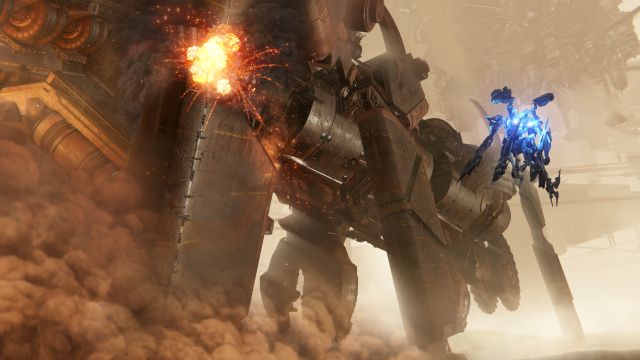
“Freely customizing and changing the appearance of your AC to your liking, taking that into combat, and taking full mastery of it on the field of battle, this is a universal and borderless source of fun and inspiration that has lasted the test of time,” Yamamura says. It’s for this reason that assembly is so critical in Armored Core 6.
Almost every part of your AC is able to be swapped out for another, whether that be your legs, head, arms, or shoulders—you can even customize the look of each part individually. New parts can be purchased from the shop, with more unlocked as your progress, and each has its own specs which allows you to create a build finetuned to your playstyle. Just be careful not to go over the energy capacity threshold or you’ll find your mech getting sluggish.
In Armored Core 6’s initial missions, assembly may not feel like it plays a big part, however. Over the course of four or five levels, I put together a build that suited my playstyle: powerful but defensive. I swapped parts in and out as I identified what worked for me, selling the parts I no longer needed and picking up ones I wanted to try out.
Assembly was more a convenience than a necessity for me in those first few missions because, honestly, they are dull and repetitive. Deploy on Sortie. Find target. Destroy target. Grab credits and go back to base. Rinse and repeat. I know Rubicon isn’t the jolliest place, but the environments themselves are bleak, barren landscapes, devoid of real detail except brutalist architecture. Armored Core 6’s world feels a light-year away from Yharnam and the Lands Between. Perhaps that’s the point, for the world to be as cold and mechanical as the mechs that inhabit it, but partaking in these missions feels like being on a factory conveyer belt: linear and tedious despite the scale.
I rolled through the motions of these missions and, finally, I hit a wall. A literal mechanical wall: the Juggernaut. Armored Core 6’s levels may feel like filler, but its boss fights are all thriller. I died and died again, each time learning what I did wrong in the previous run but ultimately realizing that my heavy, powerful build was not what was required in this situation. I needed to be light and fast. If I had paid attention to the cryptic hints shown during the fight (which I wrote off as preview bugs) then I would have realized that much sooner.
One problem: you can’t access assembly when on a mission. To change my parts, I needed to leave the mission entirely. That would have been fine, except getting to the Juggernaut wasn’t easy. The boss fight with this raging bull is tucked behind a somewhat-challenging run that sees you clearing out a heap of turrets and mechs. If I quit out, I had to do it all again. It was a pain, but after death five I was considerably more open to this.
I accessed the Assembly screen and sold my spare parts. The problem is, I couldn’t sell the parts I had equipped, nor could I unequip them to sell. I would have to buy new parts to replace them. But, I had no credits to buy these new parts because I couldn’t sell the ones I had. A vicious circle. I’d have to grind for more credits to buy the parts I would need to then complete the frustrating mission to get another crack at the Juggernaut. What had been a thrilling boss fight had now ground to a crawl as I tried to get my house in order.
Yamamura later explained this grinding process isn’t the intention, nor is it a requirement for success in Armored Core 6.
“Some players may find it beneficial to replay missions for credits, and actually getting a higher rank and getting more credits is part of the intended late-to-end game content, if players are interested in that kind of challenge run,” Yamaura says. “However, we definitely don’t expect that to be a required part of the game flow. We don’t expect players to have to repeatedly grind missions in order to make enough credits.”
Yamamura went on to explain that FromSoftware is still making tweaks to the early game economics and balance, and actively encourages players to “buy and experiment with as much as possible.”
Keeping the core
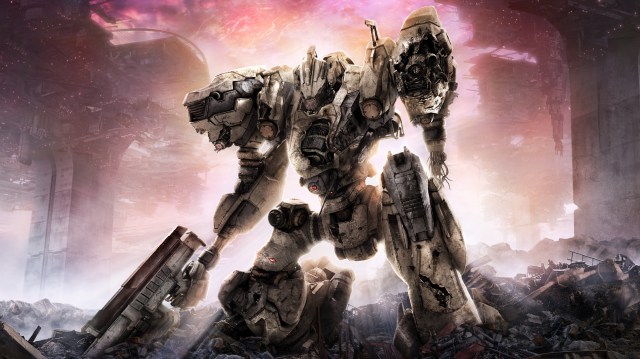
While assembly is a key pillar of Armored Core 6, you can simply “brute force” your way to success by learning enemy patterns and adjusting as required. Encouraging players to adapt and learn during combat is something FromSoftware is no stranger to. In the 10 years since Armored Core 5 was released, the developer has released a number of successful titles, including Bloodborne, Sekiro: Shadows Die Twice, and Elden Ring. Those last two in particular taught FromSoftware a thing or two about verticality and how to make the best use of the 3D-level space.
“We have taken influence from the way we designed these maps and these play spaces, these three-dimensional spaces in which you’re able to make full use of your max three-dimensional movement, and also the combat design aspect as well,” Yamamura explains. “So how you’re expected to observe your enemies and learn from their attack patterns and animations and change your strategy and play style in accordance with that. These are some lessons we’ve taken and tried to apply to that primitive fun of mech action combat in a way that makes sense and doesn’t alienate that original identity of Armored Core.”
Combat evolved
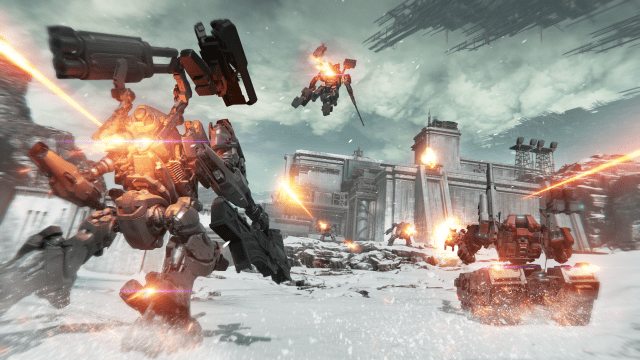
Although the core identity of Armored Core is being retained in AC6, the series has certainly evolved since the last entry. Ultimate Weapons, known in Japanese as “Overed Weapons,” are a special class of weapon seen in Armored Core 5 that were so powerful they could knock an arm off your mech when you used them. These no longer exist in the same form in Armored Core 6, with Yamamura explaining that FromSoftware wanted to focus on “the combination of weapons and how the player uses that combination to get the enemy staggered, and how they then deal critical damage.” You may encounter enemies that use the equivalent of these weapons, however.
Yamura explained that this decision was a matter of “prioritization and balancing.” But that’s not to say we won’t see ultimate weapons appearing again in the future.
“What we wanted to do was focus on the core of Armored Core first and get that refined in the current space,” Yamamura explains. “And if we have an opportunity in the future we’d like to revisit these Overed Weapons in some form if we get the chance.”
Related: Armored Core 6 Premium and Collector’s Editions price, contents, and more
The stagger system is perhaps the biggest change Armored Core fans will have to get to grips with. In fact, FromSoftware’s only piece of advice for long-time players is to get well acquainted with it.
“[The stagger system] is quite a big part of the battle design and this element of using all four weapons concurrently and at different intervals, having full control over your arsenal like this is integral to success in combat,” Yamamura explains. “In order to stagger the enemy, you need to deal some impact damage, and then while they’re staggered, direct hit damage is going to take them down quicker.”
“How [players] use the spacing and positioning, how they use the timing of the weapons, within that framework, that’s going to be crucial to the battle design this time,” Yamamura says. While Armored Core 6 does have a target assist feature, Yamamura suggests that more experienced players should disable the feature for a more challenging experience. I’ll leave it on though, thanks.
Cold as steel
At its core (pardon the pun), Armored Core 6 is an action game, perhaps more so than previous entries in the series. But what continues to set this series apart from the likes of Elden Ring is the ability to customize each part of your build to your own requirements, without the need to level up or tinker with a skill tree. There may be a focus on action, but this is a mech game at its heart.
During Armored Core 6’s boss battles, these two elements co-exist to create an adrenaline-fueled challenge on par with the high standard we’ve come to expect from FromSoftware. But the moments in between these battles feel like filler and, unfortunately, Armored Core 6’s world and missions are as cold and mechanical as the mech you assemble.


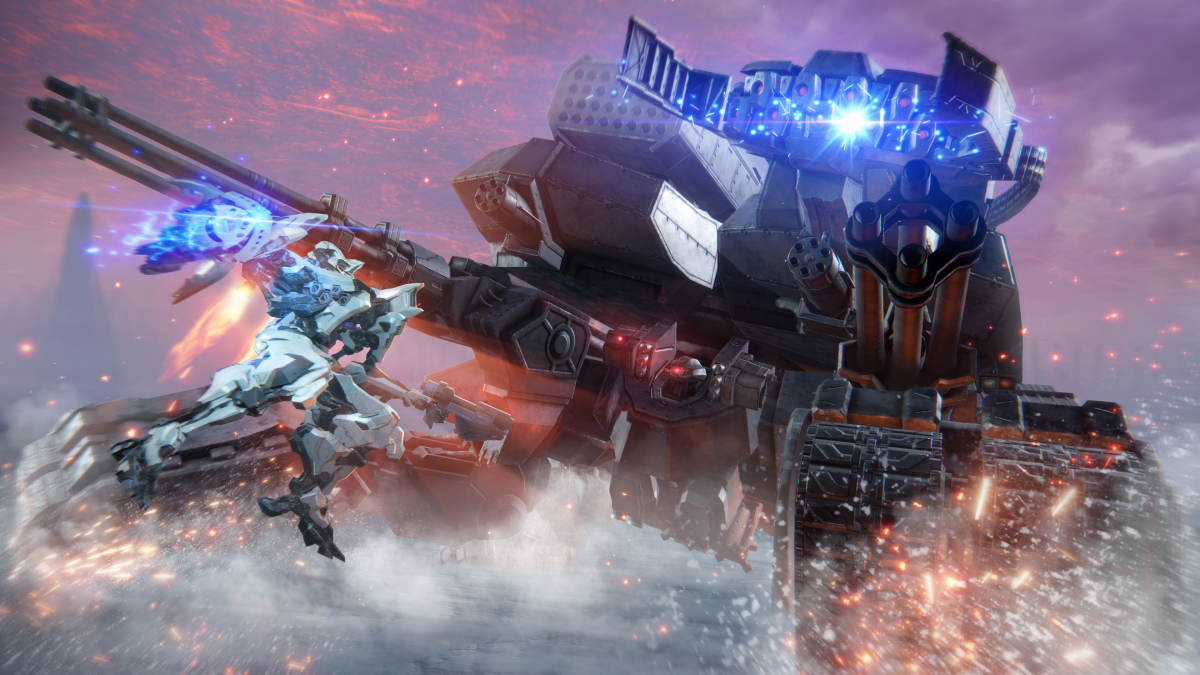
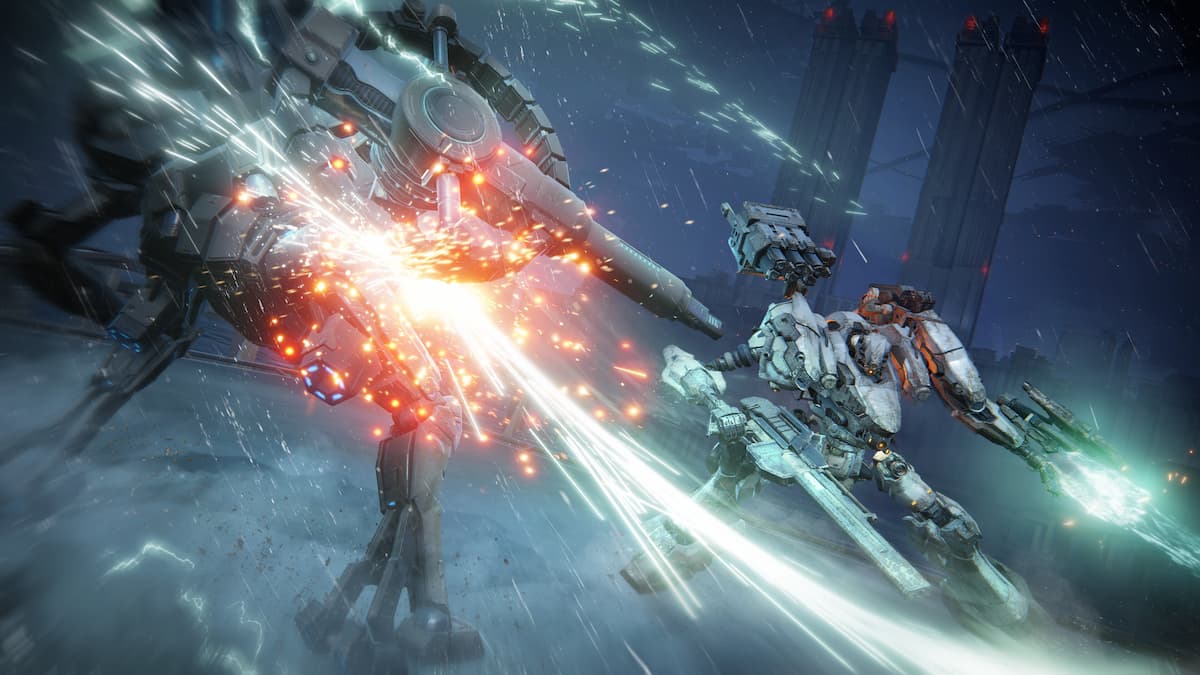

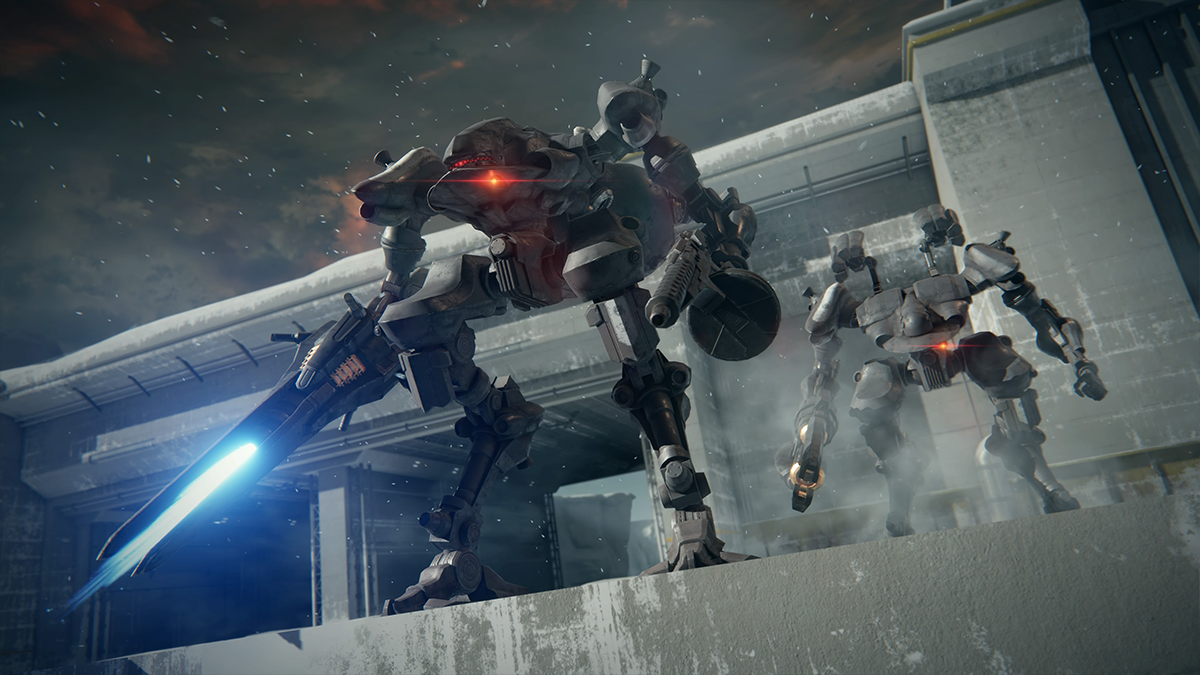
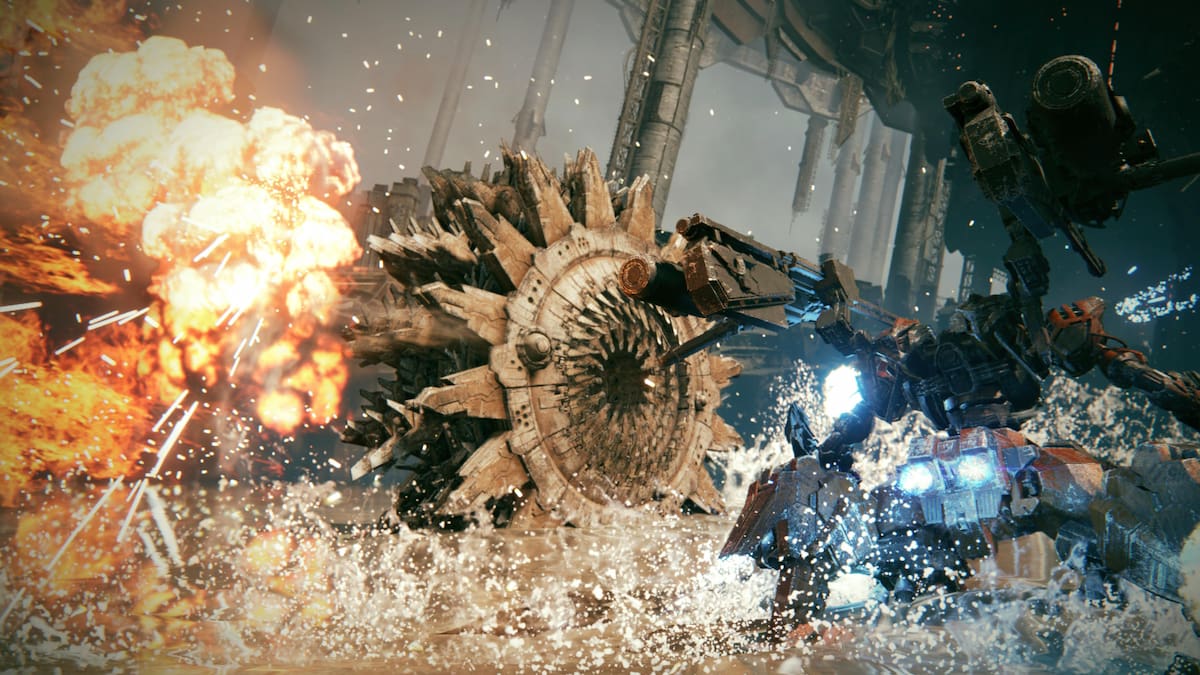

Published: Jul 25, 2023 10:01 am